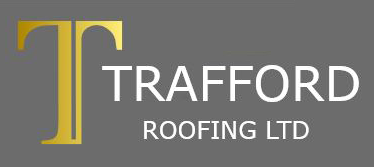
TRADITIONAL ROOFING
Trafford Roofing Ltd specialise in all aspects of roofing whether it’s a full re -roof or minor repair.
Re-Roofs
Trafford Roofing Ltd specialise in complete roof over-hauls, as a company we only use the best materials available on the market and cater to all customers design ideas, and budgets
All our projects have to comply to BBA standards and regulations, as LABC registered company all our work meets the very highest standards. We use a wide range of materials for every kind of roof.
Choosing a roof tile with the right surface finish is crucial to the finished appearance of the roof and how it will look in the future. It is important for roofing contractors to understand why manufacturers use certain surface finish treatments on clay and concrete tiles, and how this affects the aesthetics and performance of the product in the short and long term.
SANDTOFT CLAY TILES
The beauty of natural clay tiles lies in the way which they retain the natural colour of the clay material before maturing to a darker, richer shade. The degree to which this occurs and the rapidity with which any changes takes place depends upon two factors. The first is the nature of the tile itself, and the second is the environment in which it is laid.
Machine made tiles are extremely dense and durable. Accumulations of extraneous material are slow to take hold and the appearance of the tile is slow to change. The colour of the tile will not fade under any circumstances and the slow change that does take place will be a steady darkening of colour.
Due to the nature of the clay tile production process, slight colour variations are to be expected and actually in many cases enhance the look of the finished roof. We advise not to mix tiles from different batches on the roof and to achieve the best effect tiles should be taken from several pallets and mixed at random.
Some clay tile colours are achieved by applying an “engobe” to the surface of the tile prior to firing in the kiln. An engobe is a ceramic slip coating consisting of 45-90% clay, 10-40% Frits (glass) and 1-15% manganese oxides. The glass content produces a strong, vitrified scratch-resistant surface, whilst the manganese oxides give the required colour. The clay content means that when the tile is fired, the engobe and the tile ‘fuse’ together and become one, meaning that the coloured coating is as durable as the tile.
MARLEY CONCRETE ROOF TILES
Marley’s collection of affordable concrete roof tiles combines outstanding aesthetics with high-quality to ensure that your roof stands out from the rest.
Their concrete interlocking roof tiles and concrete plain tiles are easy to lay, thus ensuring you can keep our installation costs down. They have also been certified as “excellent” for BES 6001, which means that projects using these products can now achieve extra credits under BREEAM and HQM as well as an A+ rating in BRE Green Guide.
The exceptional versatility of Marley’s plain concrete tiles makes them an obvious choice for any roof project, given the choice of 9 distinctive colours and 3 finishes, and also their compatibility with our clay feature tiles.
While the interlocking concrete roof tiles have been engineered to meet the most exacting of project briefs, providing greater protection for your roof as well as superb visual appeal.
SLATE ROOF TILES
Slate is one of the longest-lasting roof materials, sometimes lasting more than 100 years. It is a natural rock that is mined and cut to become a form of ‘shingle‘ (a thin, tapered piece of material used as a roof and wall covering).
Slate has been used for hundreds of years as a roof covering but only after the industrial revolution and the construction of the railway network did they become common outside of the slate mining areas.
Roof slates are often mistakenly referred to as ‘tiles‘ and vice versa. Roof tiles are generally made from materials such as clay or concrete rather than slate but slate is strong and has very good weather resistance as well as low water absorption, meaning that it withstands freezing temperatures well.
However, the initial cost of slate shingles can be higher than other types of roof covering, as can repairs and maintenance. Slate roofs are also relatively heavy so it may not be suitable for every roof structure.
There are a wide variety of slate sizes, although a common large size is 600 x 300 mm. The quality (but also the weight) is determined by the thickness.
Get a Quote
If you’re interested in our Traditional roofing services, request a call back today and a member of our team will discuss your options.



